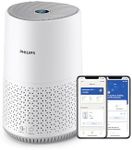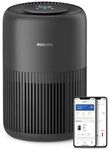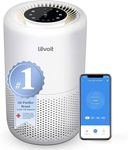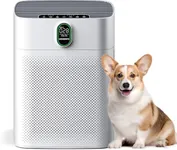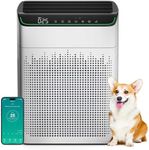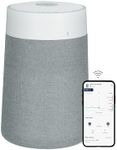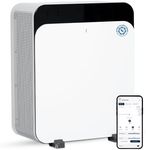Buying Guide for the Best Air Purifiers
Choosing the right air purifier can significantly improve the air quality in your home or office, making it a healthier and more comfortable environment. To find the best fit for you, it's important to understand the key specifications and how they align with your specific needs. Here are the main factors to consider when selecting an air purifier.Room Size CoverageRoom size coverage indicates the maximum area that the air purifier can effectively clean. This is important because an air purifier that is too small for your room will not be effective, while one that is too large may be unnecessarily expensive and consume more energy. Room size coverage is usually measured in square feet or square meters. For small rooms (up to 200 sq ft), a compact air purifier will suffice. For medium rooms (200-400 sq ft), look for a mid-sized unit. For large rooms (over 400 sq ft), you will need a larger, more powerful air purifier. Choose an air purifier that matches or slightly exceeds the size of the room where you plan to use it.
CADR (Clean Air Delivery Rate)CADR measures the volume of filtered air delivered by the air purifier and is expressed in cubic feet per minute (CFM). It indicates the purifier's effectiveness in removing specific pollutants like dust, pollen, and smoke. A higher CADR means the air purifier can clean the air more quickly and efficiently. For small rooms, a CADR of 100-150 is usually sufficient. For medium rooms, look for a CADR of 150-200. For large rooms, a CADR of 200 or higher is recommended. Consider your specific needs, such as if you have allergies or live in a smoky environment, and choose an air purifier with a higher CADR for those pollutants.
Filter TypeThe type of filter used in an air purifier determines what kind of particles it can remove from the air. Common filter types include HEPA (High-Efficiency Particulate Air), activated carbon, and UV-C light. HEPA filters are highly effective at capturing small particles like dust, pollen, and pet dander, making them ideal for allergy sufferers. Activated carbon filters are good for removing odors and chemical pollutants. UV-C light filters can kill bacteria and viruses. Consider your specific needs: if you have allergies, a HEPA filter is essential; if you are concerned about odors, look for a unit with an activated carbon filter; if you want to reduce germs, a UV-C light filter may be beneficial.
Noise LevelThe noise level of an air purifier is important, especially if you plan to use it in a bedroom or office where quiet is essential. Noise levels are measured in decibels (dB). Air purifiers typically range from 20 dB (very quiet) to 70 dB (similar to a vacuum cleaner). For a bedroom or quiet space, look for an air purifier with a noise level of 30 dB or lower. For living areas or offices, a noise level of 40-50 dB is usually acceptable. Consider where you will place the air purifier and choose one with a noise level that will not disrupt your activities.
Energy ConsumptionEnergy consumption refers to how much electricity the air purifier uses. This is important for both environmental and cost reasons. Energy consumption is usually measured in watts (W). Air purifiers with Energy Star certification are more energy-efficient and can save you money on your electricity bill. For continuous use, look for an air purifier that consumes less than 50 watts. For intermittent use, energy consumption may be less of a concern. Consider how often you will use the air purifier and choose one that balances performance with energy efficiency.
Maintenance and Filter ReplacementMaintenance and filter replacement are ongoing considerations when owning an air purifier. Regular maintenance ensures the unit operates efficiently and effectively. Filters need to be replaced periodically, and the frequency depends on the type of filter and usage. HEPA filters typically need replacement every 6-12 months, while activated carbon filters may need replacement every 3-6 months. Some air purifiers have washable filters, which can reduce ongoing costs. Check the manufacturer's recommendations for filter replacement and consider the availability and cost of replacement filters. Choose an air purifier with maintenance requirements that fit your lifestyle and budget.




